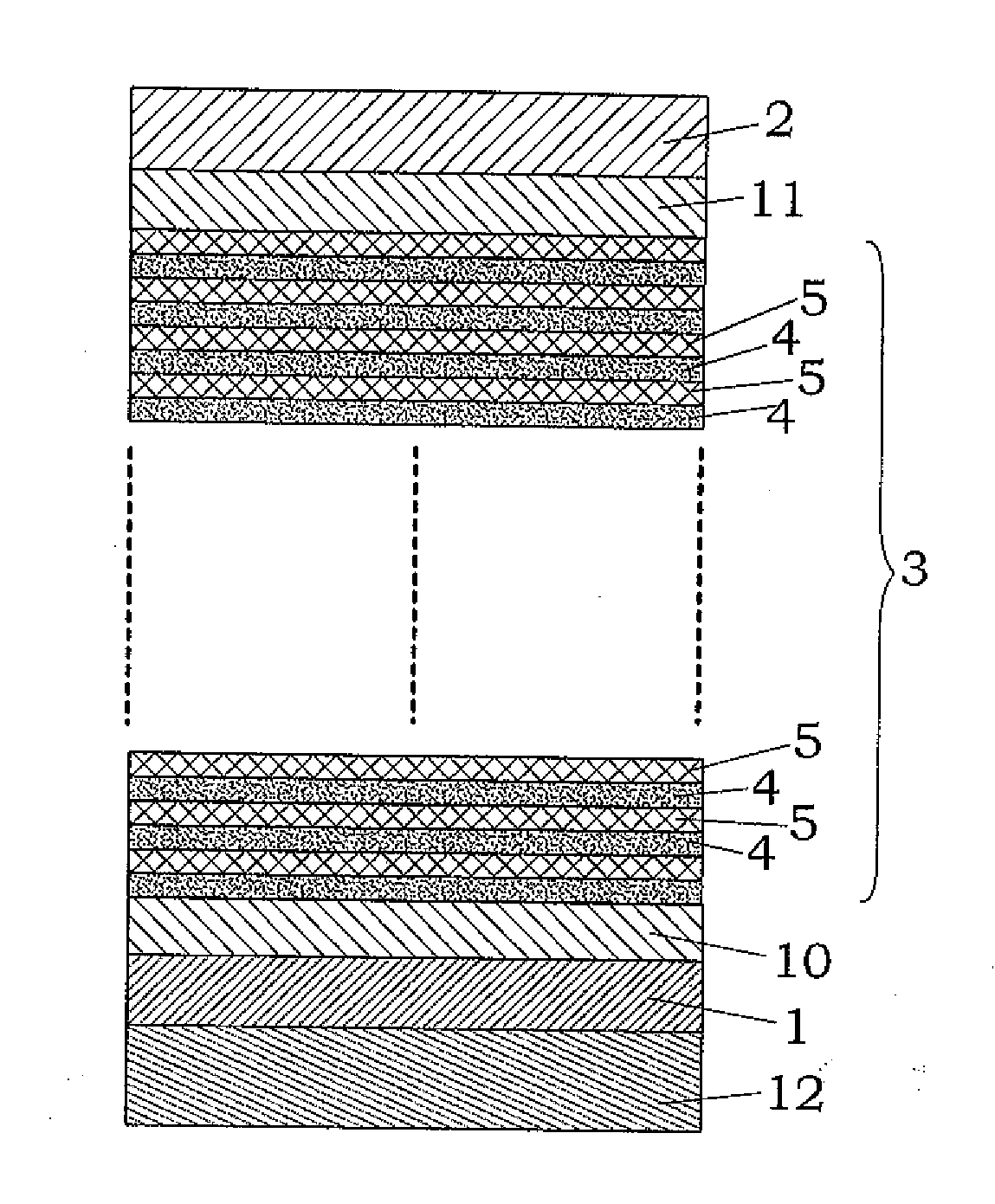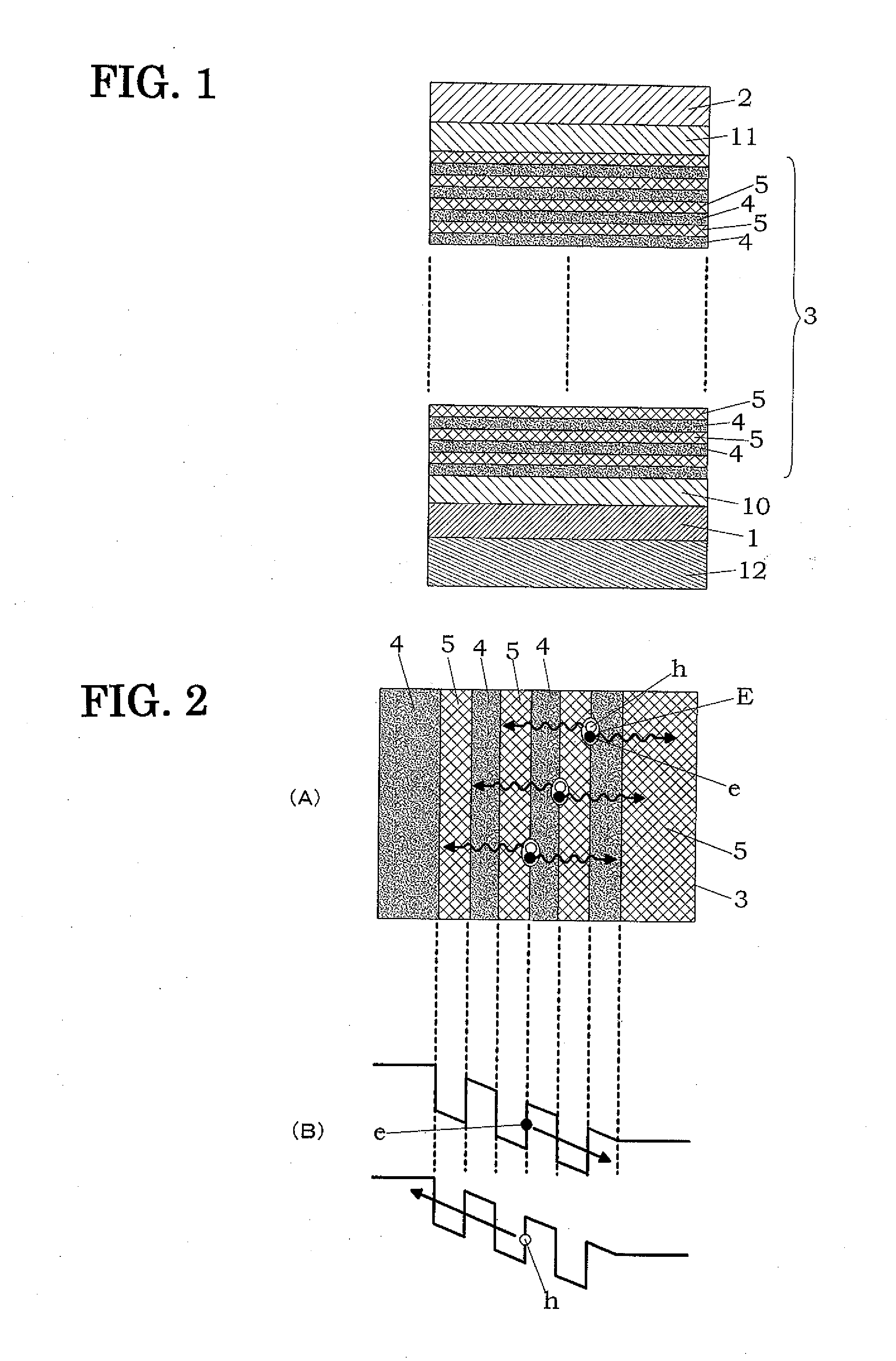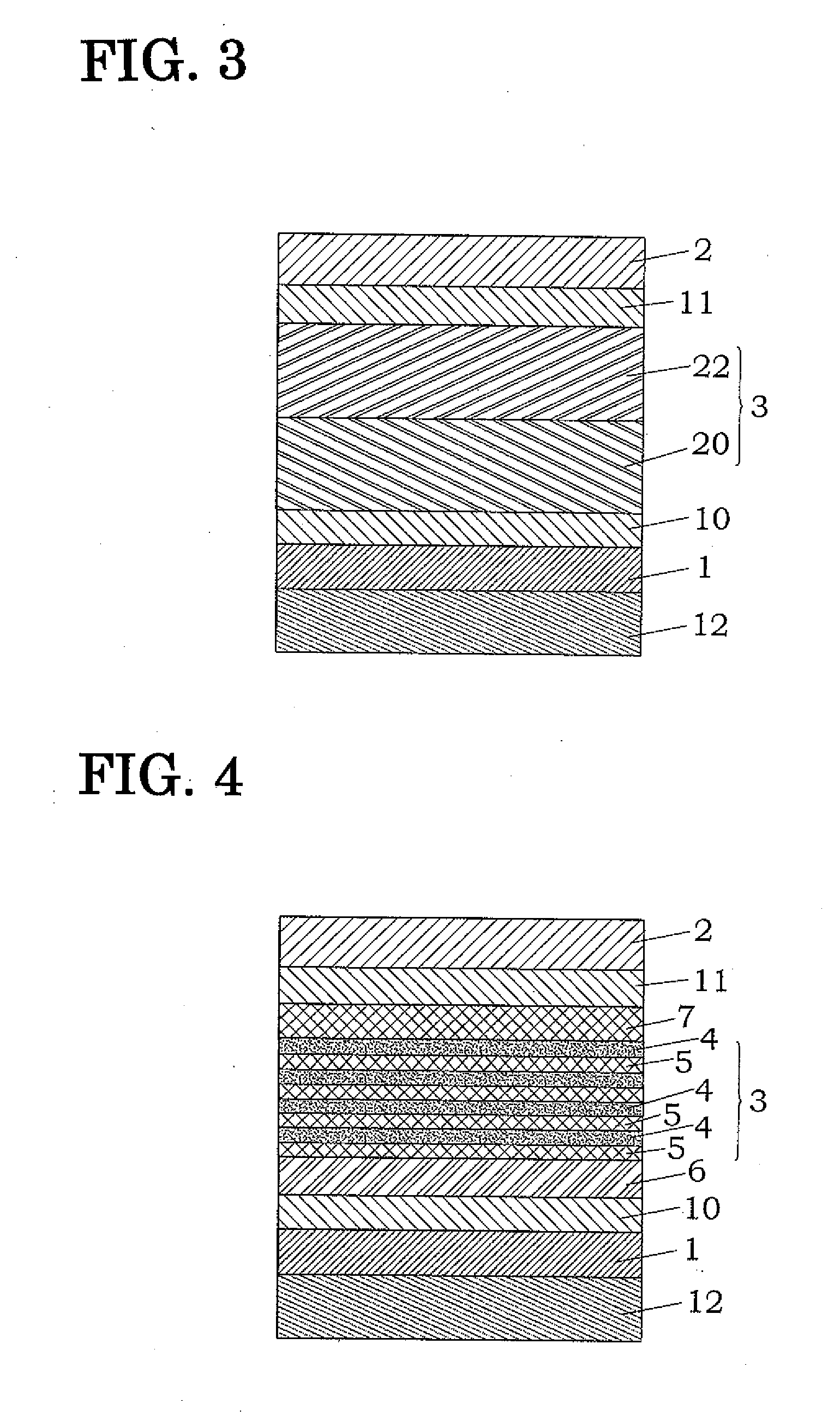Organic thin film solar cell
a solar cell and organic technology, applied in the field of organic thin film solar cells, can solve the problems of limited actual amount of work, low conversion efficiency, and extent to which charge-separated carriers are transported to the electrodes, and achieve the effect of improving the conversion efficiency of solar cells
- Summary
- Abstract
- Description
- Claims
- Application Information
AI Technical Summary
Benefits of technology
Problems solved by technology
Method used
Image
Examples
example 1
[0055]As shown in FIG. 4, a hole transport layer 10 in the form of a PEDOT:PSS layer (poly[3,4-(ethylenedioxy)thiophene]:poly (styrene sulfonate) was formed at a film thickness of 30 nm on an electrode 1 in the form of a glass electrode 12 in which an ITO electrode was formed a film thickness of 150 nm. Next, p-type organic semiconductor molecules in the form of pentacene were vacuum vapor-deposited on hole transport layer 10 to form an electron-donating organic semiconductor thin film 6 having a film thickness of 25 nm.
[0056]Next, n-type organic semiconductor molecules in the form of fullerene (C60) were vacuum vapor-deposited on thin film 6 to form electron-accepting organic semiconductor thin film 5 having a film thickness of 1 nm, and pentacene was vacuum vapor-deposited thereon to form electron-donating thin film 4 having a film thickness of 1 nm. The fullerene thin film 5 and pentacene thin film 4 were alternately stacked three times each to form a multilayer film in the form ...
example 2
[0058]An organic thin film solar panel of Example 2 was obtained in the same manner as Example 1 with the exception of photoelectric conversion layer 3 having a multilayer structure consisting of a total of four layers provided with two layers each of fullerene thin film 5 having a film thickness of 2 nm and pentacene thin film 4 having a film thickness of 2 nm, and in which these layers are alternately stacked.
example 3
[0059]An organic thin film solar panel of Example 3 was obtained in the same manner as Example 1 with the exception of photoelectric conversion layer 3 having a multilayer structure consisting of a total of six layers provided with three layers each of fullerene thin film 5 having a film thickness of 1 nm and pentacene thin film 4 having a film thickness of 2 nm, and in which these layers are alternately stacked.
PUM
| Property | Measurement | Unit |
|---|---|---|
| thickness | aaaaa | aaaaa |
| optical transparency | aaaaa | aaaaa |
| semiconductor | aaaaa | aaaaa |
Abstract
Description
Claims
Application Information
 Login to View More
Login to View More - R&D
- Intellectual Property
- Life Sciences
- Materials
- Tech Scout
- Unparalleled Data Quality
- Higher Quality Content
- 60% Fewer Hallucinations
Browse by: Latest US Patents, China's latest patents, Technical Efficacy Thesaurus, Application Domain, Technology Topic, Popular Technical Reports.
© 2025 PatSnap. All rights reserved.Legal|Privacy policy|Modern Slavery Act Transparency Statement|Sitemap|About US| Contact US: help@patsnap.com



